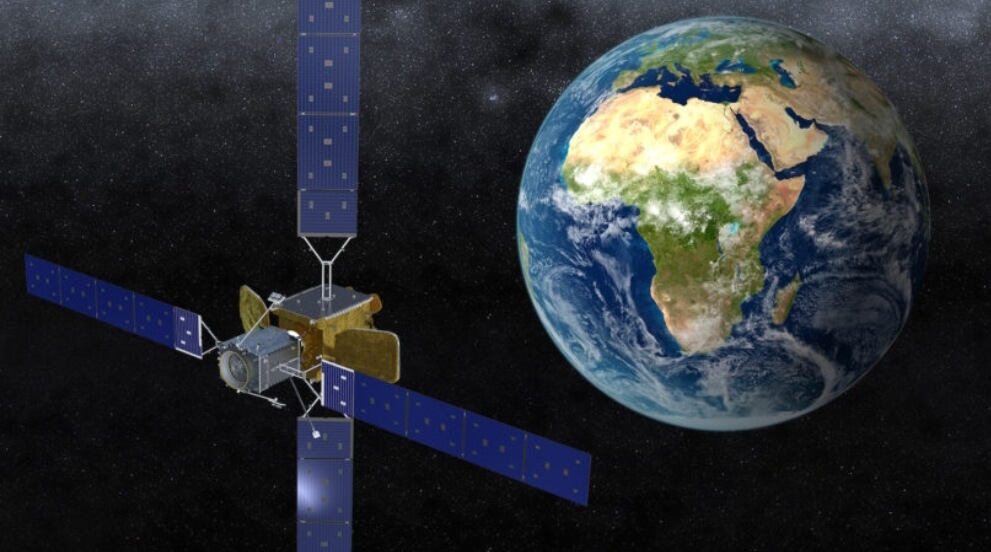Connecting the remote corners of Africa with satellite

We live in an era defined by speed and change. The emergence of the digital transformation is one of the industry’s top talking points, expected to revolutionize and change the way we live, work and communicate. Supporting more types of devices than ever before, new technologies are being developed to help make life easier and safer – with 5G playing a huge role in this – but this requires permanent availability combined with an instant connection to deliver real-time results.

With advanced broadband upon us, more and more use cases, devices and applications are being created to take advantage of new connectivity capabilities. As a result, broadband services are now more easily accessed in towns and cities, where the population density is higher, and investment is more readily available. However, for many people, broadband is still not easily accessible, if at all. This is especially true for rural areas in developing continents such as Africa.
According to Statista, almost 4.54 billion people were active internet users as of January 2020, which amounts to 59% of the global population. Although many of us consider the Internet of Things (IoT) to be a pivotal part of our daily lives, just under half of us do not have access and therefore cannot reap the benefits it brings. But there is a solution out there that can deliver broadband to even the most remote places on Earth – and that is satellite connectivity.
The digital divide
In continents such as Africa, access to high-speed, reliable broadband connectivity can significantly impact the quality of life and the economy. Connectivity has the power to stimulate socio-economic activity throughout the region, providing access to high demand applications, such as community Internet access and mobile backhaul. This includes public institutions which will also significantly benefit from dedicated services including education, healthcare and civil defence.
Satellite is an ideal solution to provide backbone connectivity to regions, such as Africa, that have limited access to a fibre or undersea cable infrastructure, or when the backbone link needs to cross regions that cannot be secure. Proving itself to be essential for any form of communication, it has the availability to reach even the remote corners of Africa, regardless of geographical barriers, and is a key enabler for a range of applications that will push connectivity access to more individuals than ever before.
There is also a revolution occurring within the satellite industry. Known as “Space 2.0”, demands for increased capacity and better coverage are driving innovation in GEO satellites and a lot of investment is being poured into Non-Geostationary Satellite Orbits (NGSO). The declining cost of launching satellites is fueling the deployments of new LEO constellations in orbit.
Read also: Alex Okosi appointed MD of YouTube’s EMEA emerging markets
The characteristics of the MEO and LEO orbits, with their overall improved latency compared to GEO, means service providers have more flexibility to provide innovative service. Leveraging the digital payloads means satellite operators can create dynamic coverage anywhere on earth at throughputs we’ve only dreamt of. As a result, we will see a whole new host of use-cases which will leverage hybrid terrestrial and satellite connectivity, as well as multi-orbit connectivity solutions which satellite operators, satellite service providers and telcos will leverage to create new value for their customers. At ST Engineering iDirect, our opportunity is to provide them with a ground segment solution which can leverage all of these new orbits and allow customers to leverage the technology seamlessly in their networks.
A solution in satellite
Newtec and ST Engineering iDirect – who are both specialists in the designing, developing and manufacturing of equipment and technologies for satellite communications – joined forces last year to combine Newtec’s innovations in performance and efficiency with iDirect’s innovations in networking and mobility.
ST Engineering iDirect offers a feature-rich portfolio that can match the right technology to the right business at the right cost, no matter what the customer requirements, as well as a magnitude of change in market access that enables them to move far into the future.
The new, unified company is setting a new benchmark for performance, efficiency and scalability, exceeding expectations. ST Engineering iDirect is enabling interoperability to secure the future – offering adaptable, hybrid solutions that give customers throughout Africa the competitive advantage in a converged world, unlocking new applications and providing access to new markets and revenue streams.
As one of Africa’s leading independent data, voice and IP providers, Liquid Telecom is already taking advantage of the benefits that the new portfolio brings. The company deployed the Newtec Dialog® platform to expand and improve the organization’s current VSAT services with more applications and features for both current and new customers. Liquid Telecom is also using Dialog to expand its service portfolio towards new markets, in a cost-effective way.
Additionally, Liquid also deployed iDirect’s Universal Satellite Hub at its teleport in Johannesburg, South Africa, along with the next-generation iQ Desktop remotes to offer Layer 2 VPLS connectivity across both fibre and satellite on a single network. The offering provides a complete, end-to-end solution for VSAT integrators and corporate customers that will deliver more reliable, consistent and cost-effective broadband for users across any network.
The Newtec Dialog platform, which is a single-service and multiservice VSAT solution, provides operators and service providers with the means to build and adapt their infrastructure and satellite networking according to business or missions at hand. The Dialog platform also provides revolutionary Mx-DMA® technology and the latest release sets a new benchmark for network performance and efficiency. The Mx-DMA technology combines the benefits of two traditional satellite return link technologies, SCPC and TDMA, and ensures that all the traffic is accommodated at each remote base station while multiplexing the bandwidth very efficiently between these remotes to decrease the backhaul operating costs.
Ensuring Africa is future-ready
As connectivity demands continue to reach unprecedented levels year on year, Africa needs to ensure that it is ready for the future. By connecting schools and communities with sustainable broadband, e-learning initiatives can be launched, enabling the potential of millions across Africa. With the additional challenge of vast rural areas, satellite is the ideal solution to deploy this connectivity quickly and cost-effectively.
ST Engineering iDirect is unlocking tremendous flexibility and scale so broadband operators can deliver a broader range of service levels at a lower cost structure without compromise. Opening up many corners of the world, such as Africa, is the company’s ground segment technology that will be integral for the future success of satellite connectivity, today and tomorrow.
Source: Pieter Paul Mooijman/BusinessChief
Oral Ofori is Founder and Publisher at www.TheAfricanDream.net, a digital storyteller and producer, and also an information and research consultant.




